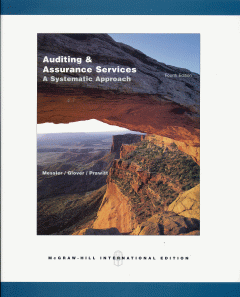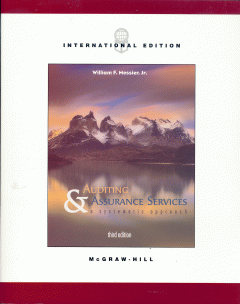Ditapis dengan
# Debug Box
/var/www/dpr_slims_baru/lib/SearchEngine/SearchBiblioEngine.php:687 "Search Engine Debug 🔎 🪲"
Engine Type ⚙️: "SLiMS\SearchEngine\SearchBiblioEngine"
SQL ⚙️: array:2 [ "count" => "select count(sb.biblio_id) from search_biblio as sb where sb.opac_hide=0 and ((match (sb.author) against (:author in boolean mode)))" "query" => "select sb.biblio_id, sb.title, sb.author, sb.topic, sb.image, sb.isbn_issn, sb.publisher, sb.publish_place, sb.publish_year, sb.labels, sb.input_date, sb.edition, sb.collation, sb.series_title, sb.call_number from search_biblio as sb where sb.opac_hide=0 and ((match (sb.author) against (:author in boolean mode))) order by sb.last_update desc limit 20 offset 0" ]
Bind Value ⚒️: array:1 [ ":author" => "'+\"Douglas F. Prawitt\"'" ]

Auditing and assurance services
This book takes a systematic approach to the audit process by first introducing the three basic concepts that underlie the audit process : materiality, audit risk, and evidence. These concepts are then applied to each major business process and related account balances using a risk-based approach. For example, each business process chapter starts with an overview of the information system follo…
- Edisi
- 4th ed
- ISBN/ISSN
- 0-07-111623-0
- Deskripsi Fisik
- xxxviii, 888 hal. : il. ; 26 cm.
- Judul Seri
- -
- No. Panggil
- -

Auditing and assurance services
This book takes a systematic approach to the audit process by first introducing the three basic concepts that underlie the audit process : materiality, audit risk, and evidence. These concepts are then applied to each major business process and related account balances using a risk-based approach. For example, each business process chapter starts with an overview of the information system follo…
- Edisi
- 4th ed
- ISBN/ISSN
- 0-07-111623-0
- Deskripsi Fisik
- -
- Judul Seri
- -
- No. Panggil
- -
 Karya Umum
Karya Umum  Filsafat
Filsafat  Agama
Agama  Ilmu-ilmu Sosial
Ilmu-ilmu Sosial  Bahasa
Bahasa  Ilmu-ilmu Murni
Ilmu-ilmu Murni  Ilmu-ilmu Terapan
Ilmu-ilmu Terapan  Kesenian, Hiburan, dan Olahraga
Kesenian, Hiburan, dan Olahraga  Kesusastraan
Kesusastraan  Geografi dan Sejarah
Geografi dan Sejarah